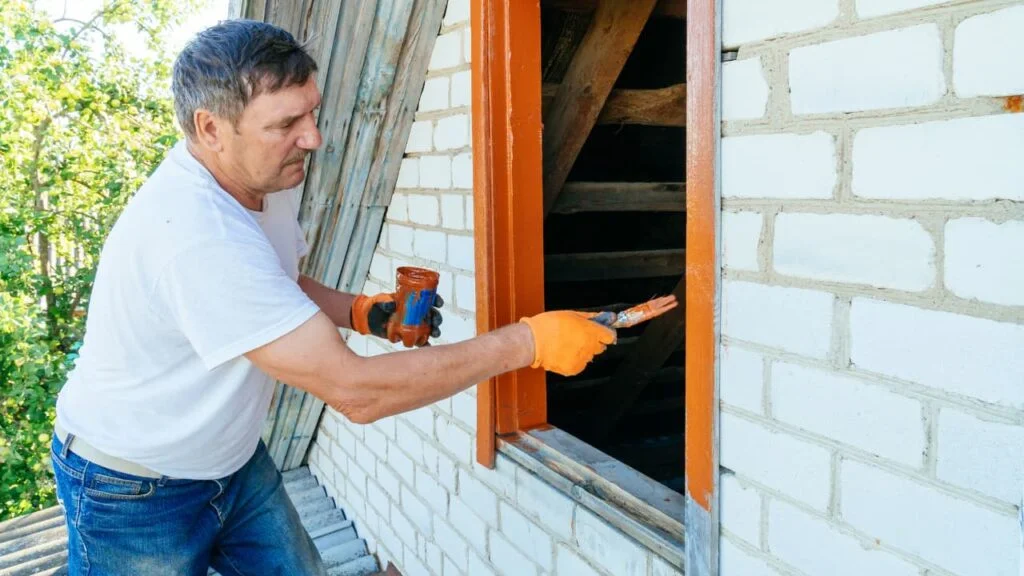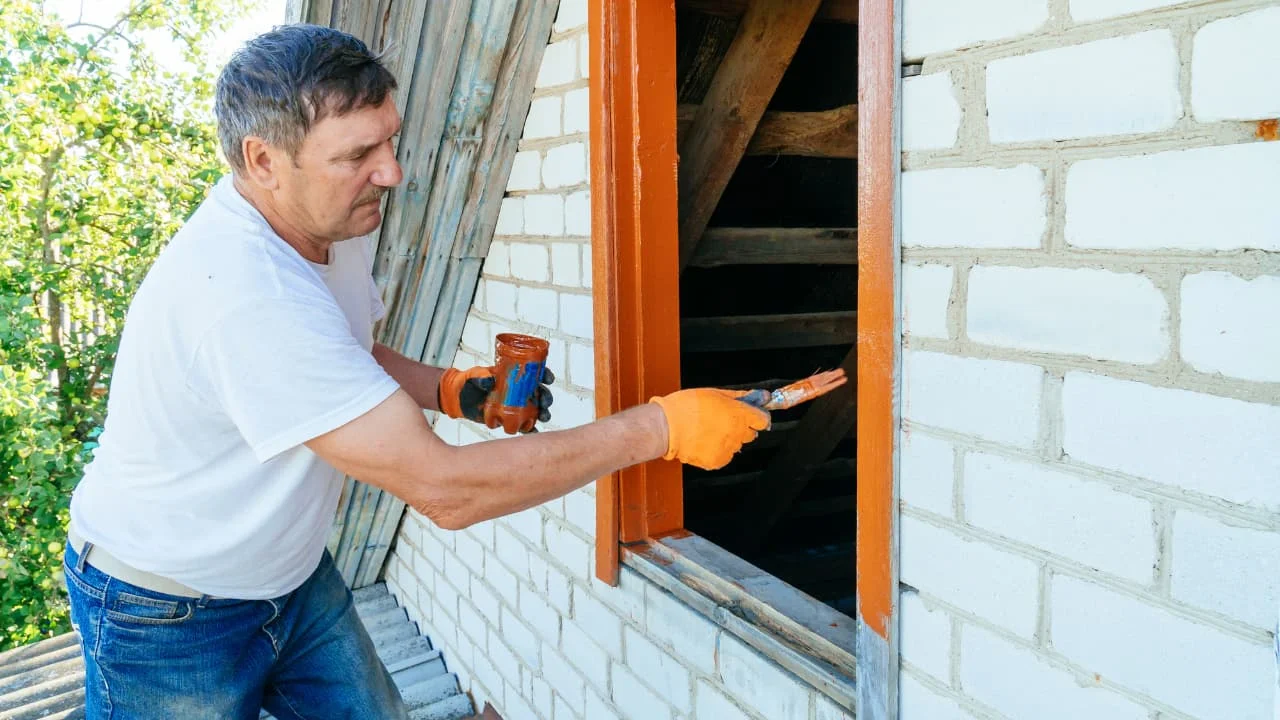Best exterior painting weather conditions
When it comes to painting the exterior of your home, weather conditions play a crucial role in achieving a flawless finish. The right temperature, humidity, and wind conditions for outdoor painting projects can ensure that the paint adheres properly and dries evenly, resulting in a long-lasting paint job that enhances the curb appeal of your property. In this article, we will explore the optimal weather conditions for painting outside and the potential consequences of painting in unfavorable conditions.
Table of Contents

What is the best temperature range to paint outside?
Temperature is one of the most critical factors to consider when painting outside. Both exterior latex paint and oil-based paint have specific temperature requirements for optimal performance.
How does temperature affect exterior paint?
Extreme temperatures can negatively impact the paint’s ability to adhere to the surface. In very cold conditions, the paint may not spread evenly, leading to streaks and an uneven finish. On the other hand, painting in extreme heat can cause the paint to dry too quickly, resulting in poor adhesion and potential cracking.
What is the ideal temperature to paint outside?
The ideal temperature range to paint outside is typically between 50°F and 90°F (10°C and 32°C). Within this range, the paint will spread smoothly, adhere well, and dry evenly. When the temperature falls outside this range, consider postponing your painting project for more favorable weather conditions.
Can you paint your home’s exterior in cold weather?
While it is possible to paint in colder temperatures, it is essential to use paint specifically formulated for cold weather conditions. Cold-weather paints are designed to cure effectively even in lower temperatures, ensuring a durable finish. It is always best to consult with a professional painting service to determine the right surface temperature and product for your particular needs.
How does weather conditions impact painting outside?
In addition to the air temperature, other weather conditions can affect the outcome of your exterior painting project.
How does humidity affect exterior paint?
High humidity levels can significantly impact the drying time of the paint. Excess moisture in the air and surface temperatures can cause the paint to take longer to dry, leading to a prolonged curing process. This can result in an increased risk of surface imperfections, such as dirt or insects sticking to the paint. It is generally recommended to avoid painting in very humid conditions to achieve the best results.
Do wind conditions affect paint application?
Wind conditions can also impact the application of paint. Strong gusts of wind can cause the paint to dry too quickly, leading to poor adhesion and an uneven finish. Additionally, windy conditions or rain can blow debris onto freshly painted surfaces, causing imperfections. It is advisable to choose a day with calm or light winds for your exterior painting project.
What are the best weather conditions to paint outside?
The best weather conditions to paint outside include a moderate temperature, low humidity, and calm winds. Ideally, choose a day with a temperature within the optimal temperature range mentioned earlier, humidity below 50%, and minimal wind activity. These conditions will help ensure that the paint dries properly, adheres well to the surface, and results in a flawless finish.
What are the consequences of painting outside in unfavorable conditions?
Painting outside in unfavorable conditions can have several negative consequences on your exterior paint job and its longevity.
Can painting in extreme heat cause the paint to crack?
Painting in extreme heat can cause the paint to dry too quickly, leading to poor adhesion and potential cracking. The rapid drying process prevents the paint from properly bonding with the surface, resulting in a compromised finish or smooth surface that may not withstand the test of time.
Does humidity affect the drying time of paint?
High humidity levels can significantly prolong the drying time of the paint. If the paint takes too long to dry, it remains vulnerable to damage, such as surface imperfections, insects, or dirt sticking to it. This can compromise the overall quality and appearance of your paint job. It is crucial to consider humidity levels when planning your exterior painting project.
Should I hire a professional painting service for exterior painting?
Given the impact that weather conditions can have on your house exterior paint job, it is highly recommended to hire a professional painting service for exterior painting projects.
Professionals have experience in choosing the right products for different weather conditions, ensuring proper surface preparation, and applying the paint effectively for long-lasting results. Their expertise can save you time, money, and potential headaches.
Is there an optimal time to paint outside?
Choosing the right time to paint outside can further enhance the success of your project.
What is the best time of year to paint the exterior of a house?
The best time of year to paint the exterior of a house depends on the climate and weather patterns of your specific location. In general, it is preferable to paint during mild seasons when the temperature and humidity levels are within the optimal range mentioned earlier. Avoid painting during extreme weather conditions, such as in the middle of winter or during the peak of summer.
Is it better to paint during the day or at night?
Painting during the day is usually recommended as natural daylight allows for better visibility, ensuring proper coverage and a more accurate color representation. However, if you are painting during extremely hot weather, painting in the early morning or late afternoon when the sun’s intensity is lower can help prevent the paint from drying too quickly.
Can I paint outside during hot conditions?
Painting outside during hot conditions can be challenging due to the rapid drying of the paint. If you must paint during hot weather, take extra precautions such as hydrating frequently, working in shaded areas, and following the manufacturer’s instructions for application in high temperatures. It is crucial to monitor the weather conditions throughout the day and adjust your painting schedule accordingly.
What are the differences between interior and exterior painting?
While both interior and exterior painting involves applying paint to surfaces, there are several key differences to consider.
Can I use the same paint for interior and exterior surfaces?
Interior and exterior paints are formulated differently to meet the specific demands of their respective environments. Interior paint is designed for use on interior walls, ceilings, and other surfaces that are not exposed to direct sunlight or extreme weather conditions.
Exterior paint, on the other hand, is formulated to withstand outdoor elements such as UV rays, temperature variations, and moisture. It is essential to use the appropriate paint for each exterior surface, to ensure durability and longevity.
Does weather conditions affect the drying time of interior paint?
While weather conditions do not directly impact the drying time of interior paint, they can indirectly affect it. High relative humidity and levels can increase the drying time of interior paint, similar to the effect it has on exterior paint. It is advisable to maintain a controlled indoor environment when painting interiors to ensure optimal drying conditions.
Should I consider using a paint or stain for exterior projects?
The choice between paint or stain for exterior projects depends on personal preference and the condition of the surfaces.
Paint offers a wide range of color options, provides excellent protection against UV rays and moisture, and can hide imperfections on the surface. Stain, on the other hand, enhances the natural beauty of wood surfaces, allows the grain to show through, and requires less maintenance.
Consider the look you want to achieve and the level of maintenance you are willing to undertake when deciding between paint and stain for your exterior projects.
FAQs – From Humidity to the Best Time to Paint Outside
Q: Does wind affect exterior painting?
A: Yes, wind can impact exterior painting. Strong winds can blow debris onto the wet paint, causing imperfections. It can also cause the paint to dry too quickly, leading to an uneven finish. It’s best to avoid painting on extremely windy days.
Q: What happens when you paint in cold conditions?
A: Painting in cold weather can cause several problems. The paint may not adhere properly to the surface, resulting in poor coverage and adhesion issues. Cold temperatures can also cause the paint to freeze, resulting in cracking or peeling.
Q: When is the best time to paint outside?
A: The best time to paint outside is when the weather conditions are ideal, typically during the spring or fall. It’s crucial to choose a time when the temperature is within the recommended range and when the humidity levels are lower to ensure the best results.
Q: What type of paint should I use for exterior painting?
A: Different types of paint are suitable for exterior painting depending on the surface and the desired finish. It’s best to consult with a professional painting service to determine the right type of paint for your specific project.
Q: Can painting in hot conditions affect the quality of the paint job?
A: Yes, painting in extremely hot conditions can impact the quality of the paint job. The paint may dry too quickly, causing a poor finish with brush marks or roller marks. It’s best to paint early in the morning or late in the afternoon to avoid painting in direct sunlight.

